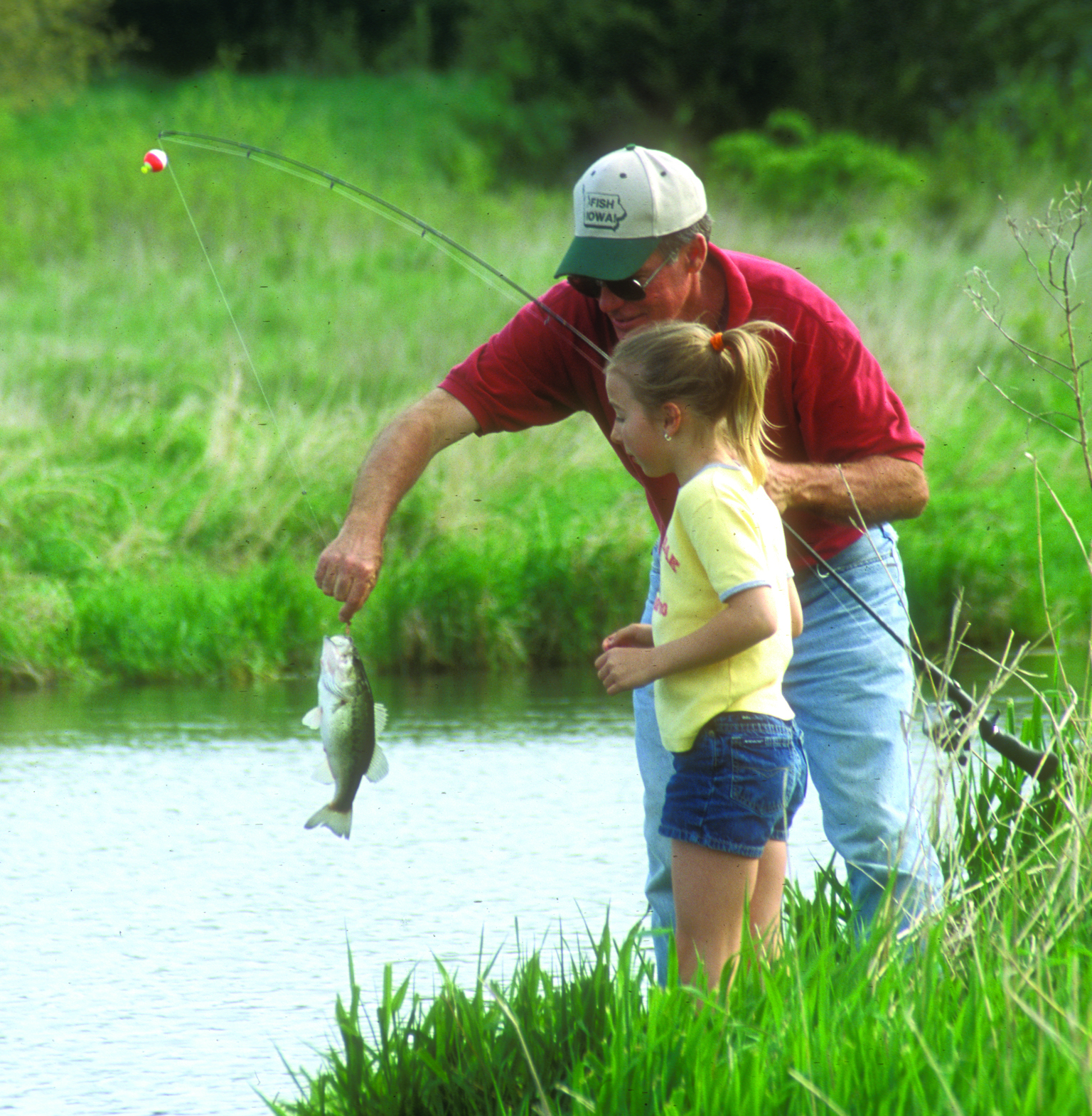Cedar River Watershed Project: Watershed Address
By Taylor on October 4, 2012 in Blog

Written by Larry Stone
It's a sultry July night in Muscatine County – and the fish are biting!
But John can't decide whether to keep or throw back the scrappy channel cat he just caught under a snag in the Cedar River.
For some reason, he keeps thinking of the little creek he crossed on a recent visit to his brother up near Osage. Several Holsteins were wading in a muddy pool in a pasture near the gravel road, and John noticed a junk pile in a ditch behind the barn.
So what? Well, although those cows – and maybe some discarded pesticide cans or oil barrels – were a couple of hundred miles away from his fishin' hole, John knew they were in the same watershed. The cows and the trash heap and the channel cat shared a connection: the source of their water. Any rainwater that fell on that watershed eventually would drain to a common spot: the Cedar River.
Could the circuitous path the water followed on its way to the Cedar affect the taste or safety of a channel cat fillet? The idea of the fish swimming in water that had flowed through a dump or a cattle yard made John uneasy. He began to wonder what other places that water had been.
As a raindrop, it fell in the muddy cow pasture. With other raindrops, it trickled into the creek, which emptied into the Cedar River. That drop ultimately would continue on down to the Iowa River, the Mississippi River, the Gulf of Mexico, and into the Atlantic Ocean.
Just as we can find our house on a map by going to more and more precise geographic locations – from country to state to town to street to house number – we also can pinpoint our “address” in a watershed.
Does the farmer whose cattle wade in the creek know his watershed address? What about his neighbor in town? Does she know where rainwater goes when it runs off her roof, or where the water disappears after she washes the car? Away? Into the street? Down the storm sewer? And then what?
We all live in a watershed, and knowing your watershed address can help you “know the flow.” You can begin to visualize where water goes when it leaves your yard, farm, or parking lot. You can find out how many other people/landowners contribute to the same water flow, and what the boundaries of the watershed are. You become much more connected with your neighbors in the watershed when you realize that you may drink, wade in – and flush with – a common water supply.
By getting to know the fellow residents of your watershed, you can understand how others use the land and the water in your common drainage area for urban, industrial, recreational, and agricultural purposes. As those uses change and grow, we may learn to see the potential conflicts over competing demands for the water and the land. For example, can trails coexist with farms? Can industries leave water clean enough for municipal supplies? Is there enough water left over to wash cars, or to irrigate crops or lawns, or for livestock to drink?
And what about flooding? Do you and your neighbors try to hustle the water away from your lawn or your street or your neighborhood or your fields? But think of the people and property downstream! Perhaps they'd rather see you “slow the flow” by protecting or creating filters or buffers of natural vegetation that will soak up that water and reduce flood surges.
Do we also need to know more about what the water carries with it as it moves through our watersheds? Is it tainted with farm or lawn chemicals; oil spilled on streets or driveways; topsoil from construction sites or soybean fields or gardens? Yes, as we become more aware of WHERE our water goes, we may find more reason to keep track of WHAT is in it!
But can one tiny watershed make a big difference? Well, several small fields may form one big farm; networks of individual streets make a city; and a series of watersheds can become a large river basin. Indeed, one component of the system CAN have an impact. Our actions in our watershed – whether keeping it clean or rushing a surge of water away to the river – WILL affect those who live downstream.
Read the first article in this series.
—–
Originally published by the Cedar River Watershed Project
Learn more about watersheds and how you can protect them.